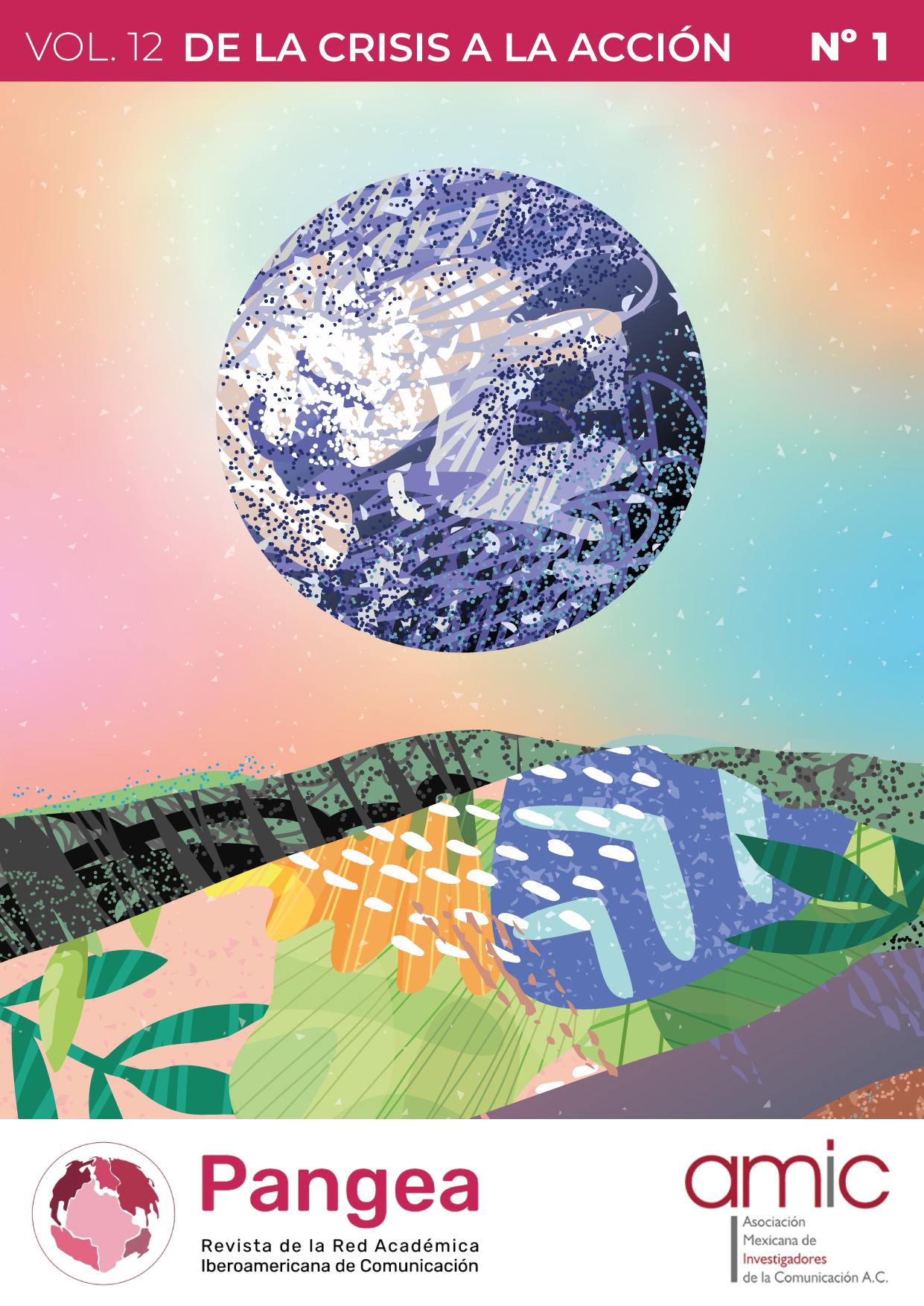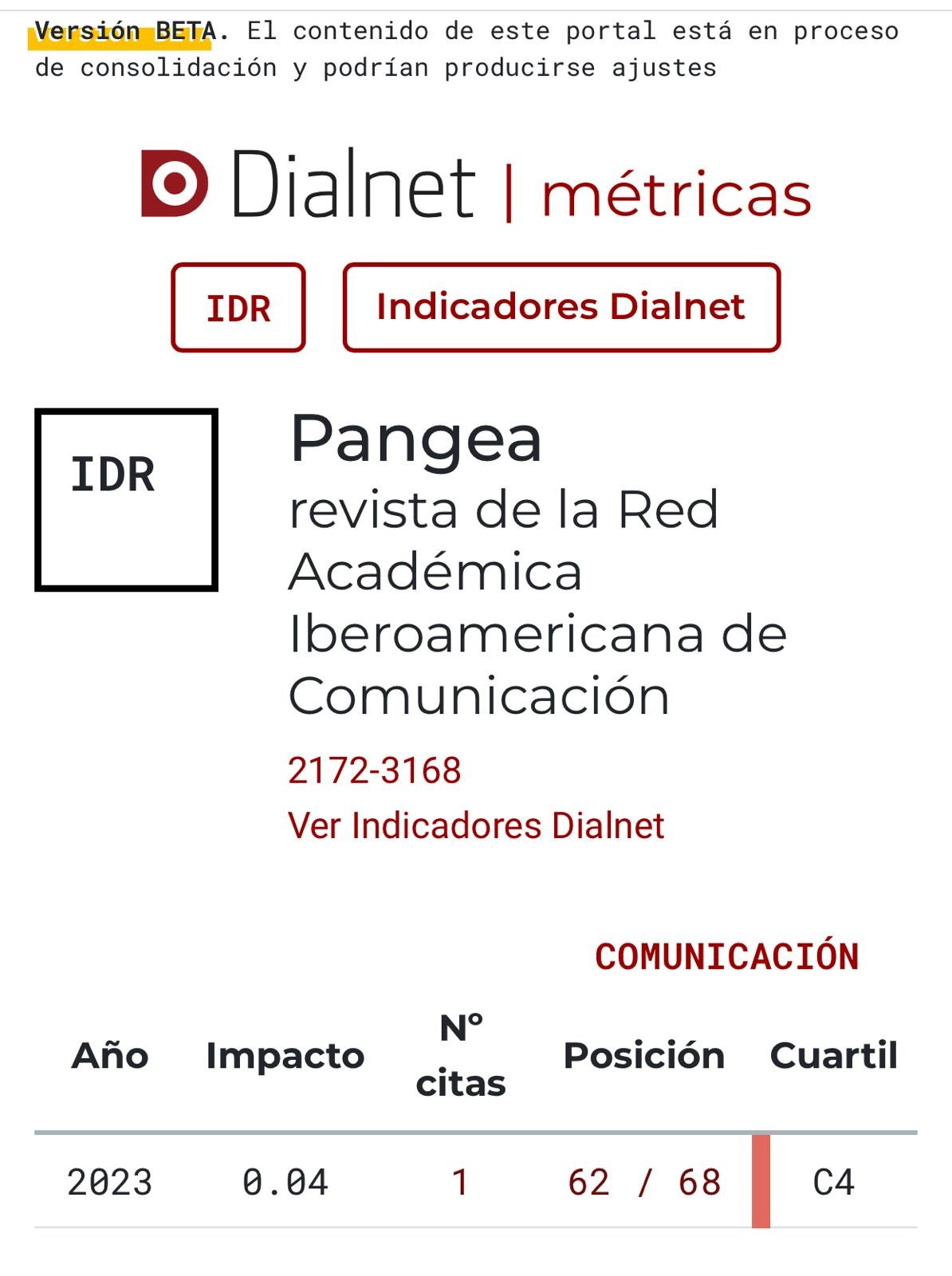Teleworking during the pandemic: the crisis that gave internal communication its biggest chance
DOI:
https://doi.org/10.52203/pangea.v12i1.130Keywords:
Internal communication, COVID-19, Telework, UruguayAbstract
The article describes a study regarding the challenges that the COVID-19 pandemic posed to internal communication professionals in Uruguay. For this, 15 in-depth interviews to people who are responsible for the internal communication of large private companies were conducted during the months of April and May 2021. During the crisis generated by the pandemic, the professionals acquired significant knowledge concerning the impacts of moving to telework abruptly, the need to strengthen the values of proximity and trust, and the role of leaders as communication agents. It is concluded that to overcome this challenge the internal communication units implemented new channels and practices, the professionals developed the role of internal advisory further, and they achieved wide recognition regarding their strategic function. Not only are the opportunities of teleworking clearly identified, but also its risks, especially for the motivations and well-being of employees, which have been configured as priorities of the area in this context.
References
Agencia de Gobierno Electrónico y Sociedad de la Información y del Conocimiento (2020). Encuesta de Usos de Tecnologías de la Información y la Comunicación 2019. Montevideo: AGESIC. Recuperado de la página oficial del organismo: https://www.gub.uy/agencia-gobierno-electronico-sociedad-informacion-conocimiento/datos-y-estadisticas/estadisticas/encuesta-uso-tecnologias-informacion-comunicacion-2019
Álvarez-Nobell, A.; Molleda, J. C.; Moreno, A.; Athaydes, A.; Suárez-Monsalve, A. M. y Herrera, M. (2021). Comunicación estratégica y relaciones públicas en América Latina: crisis del COVID-19 en la gestión de comunicación, ciberseguridad, situación de las mujeres, retos éticos y nuevas competencias. Resultados de una encuesta en 20 países. Bruselas: EUPRERA.
Anderson, D., y Kelliher, C. (2020). Enforced remote working and the work-life interface during lockdown. Gender in Management: An International Journal. Vo35, 677-683 http://doi.org/10.1108/GM-07-2020-0224
Aranda, I. (2021). El teletrabajo, una nueva forma de entender la actividad laboral. Capital Humano, 100-104.
Arzuaga-Williams, M. (2020). Rol del comunicador organizacional en Uruguay: tareas y funciones. Profesional de la información, v. 29, n. 3. http://doi.org/10.3145/epi.2020.may.26
Arzuaga-Williams, M., Pepe, A.I., Izaguirre, M. y Rodríguez-Milhomens, G. (2021). Análisis de los resultados de Uruguay en el Latin American Communication Monitor, Montevideo: Universidad Católica del Uruguay. Recuperado de https://www.youtube.com/watch?v=U79Qgtz3wUc
Bojadjiev, M., & Vaneva, M. (2021). The impact of COVID-19 crisis on a company’s internal communication. Interdisciplinary Description of Complex Systems 19 (2), 239-256. http://doi.org/10.7906/indecs.19.2.5
Castro-Martínez, A., & Díaz-Morilla, P. (2020). Comunicación interna y gestión de bienestar y felicidad en la empresa española. Profesional de la información, v. 29, n. 3, http://doi.org/10.3145/epi.2020.may.24
Contreras, F., Baykal, E., & Abid, G. (2020). E-Leadership and Teleworking in Times of COVID-19 and Beyond: What We Know and Where Do We Go. Frontiers in Psychology. http://doi.org/10.3389/fpsyg.2020.590271
Corrêa Gomes Cardim, T., (2021). Crisis mundial de Covid-19 y teletrabajo: la nueva normalidad para las relaciones laborales. Revista Internacional y Comparada de Relaciones Laborales y Derecho del Empleo, Vol. 9, Nº. 1, pp. 352-376
Chávez Escobedo, J.M., Martínez Macías, J.G., & Martínez González, J. F. (2020). Tecnología en el Trabajo. Revista Daena (International Journal of Good Conscience), 15(1), 256-263
Charoensukmongkol, P., y Phungsoonthorn, T. (2020). The interaction effect of crisis communication and social support on the emotional exhaustion of university employees during the COVID-19 crisis. International Journal of Business Communication, 1-18. Recuperado de https://journals.sagepub.com/doi/full/10.1177/2329488420953188
Dirani, K. M., Abadi, M., Alizadeh, A., Barhate, B., Garza, R. C., Gunasekara, N., Ibrahim,G., y Majzun, Z. (2020). Leadership competencies and the essential role of human resource development intimes of crisis: a response to Covid-19 pandemic. Human Resource Development International, 23(4), 380-394. http://doi.org/10.1080/13678868.2020.1780078
Dolan, S., Makarevich, A., y Kawamura, K. (2015). Are you and your company prepared for the future of work in tomorrowland? European Business Review, 4-12.
Dolce, V., Vayre, E., Molino, M., & Ghislieri, C. (2020). Far Away, So Close? The Role of Destructive Leadership in the Job Demands–Resources and Recovery Model in Emergency Telework. Social Sciences. https://doi.org/10.3390/socsci9110196
Gilson, L., Maynard, T., Jones Young, N., Vartiainen, M., y Hakonen, M. (2014). Virtual Teams Research: 10 Years, 10 Themes, and 10 Opportunities. Journal of Management Vol. 41 No.5,1313–1337. http://doi.org/10.1177/0149206314559946
Köffer, S. (2015). Designing the digital workplace of the future–what scholars recommend to practitioners. Thirty Sixth International Conference on Information Systems
Morelos-Gómez, J., & Lora-Guzmán, H. S. (2021). Análisis del teletrabajo en las agencias de viajes turísticas en la ciudad de Cartagena-Colombia. Saber, Ciencia y Libertad, 16(1), 116–127. http://doi.org/10.18041/2382-3240/saber.2021v16n1.7522
Putnam, L. L. y Nicotera, A. M. (Eds.). (2009). Building theories of organization: The constitutive role of communication: Routledge.
Tapasco-Alzate, O. & Giraldo-García, J. (2020). Teletrabajo: aspectos críticos para su implementación desde la perspectiva de los directivos 16th LACCEI International Multi-Conference for Engineering, Education, and Technology: Lima, Perú http://doi.org/10.18687/LACCEI2018.1.1.221
Tietze, S., & Nadin, S. (2011). The psychological contract and the transition from office‐based to home‐based work. Human Resource Management Journal, 21(3), 318-334. http://doi.org/10.1111/j.1748-8583.2010.00137.x
van der Lippe, T., y Lippényi, Z. (2020). Beyond formal access: Organizational context, working from home, and work–family conflict of men and women in European workplaces. Social Indicators Research, 151(2), 383-402. http://doi.org/10.1007/s11205-018-1993-1
Vattuone, X. R. (2021). Teletrabajo y capitalismo de vigilancia. Telos, 23(1),
http://doi.org/10.36390/telos231.14
Veeravalli, S., y Vijayalakshmi, V. (2019). A morphological review of enterprise social media literature. Journal of Organizational Computing and Electronic Commerce, 29(2), 139-162. http://doi.org/10.1080/10919392.2019.1583456
Verčič, A. T., Verčič, D., y Sriramesh, K. (2012). Internal communication: Definition, parameters, and the future. Public relations review, 38(2), 223-230. http://doi.org/10.1016/j.pubrev.2011.12.019
Vial, G. (2019). Understanding digital transformation: a review and a research agenda. Journal of Strategic Information Systems 28, 118–144. http://doi.org/10.1016/j.jsis.2019.01.003
Weick, K. E. (1993). “The collapse of sensemaking in organisations: the Mann Gulch disaster”, Administrative Science Quarterly, Vol. 38, pp.628-652 http://doi.org/10.2307/2393339
Yeomans, L., y Bowman, S. (2021). Internal crisis communication and the social construction of emotion: university leaders’ sensegiving discourse during the Covid-19 pandemic. Journal of Communication Management, 25 (3). 196-213. http://doi.org/10.1108/JCOM-11-2020-0130
Xifra, J. (2020). Comunicación corporativa, relaciones públicas y gestión del riesgo reputacional en tiempos del Covid-19. Profesional De La Información, 29(2). doi.org/10.3145/epi.2020.mar.20
Zito, M., Ingusci, E., Cortese, C.G., Giancaspro, M.L., Manuti, A., Molino, M., Signore, F., y Russo, V. (2021). Does the end justify the means? The role of organizational communication among work-from-home employees during the COVID-19 Pandemic. Int. J. Environ. Res. Public Health, 18, 3933. http://doi.org/10.3390/ijerph18083933
Downloads
Published
Issue
Section
License
Copyright (c) 2021 Dra., Mag., Mag.

This work is licensed under a Creative Commons Attribution-NonCommercial-NoDerivatives 4.0 International License.
https://creativecommons.org/licenses/by-nc-nd/4.0/deed.es





